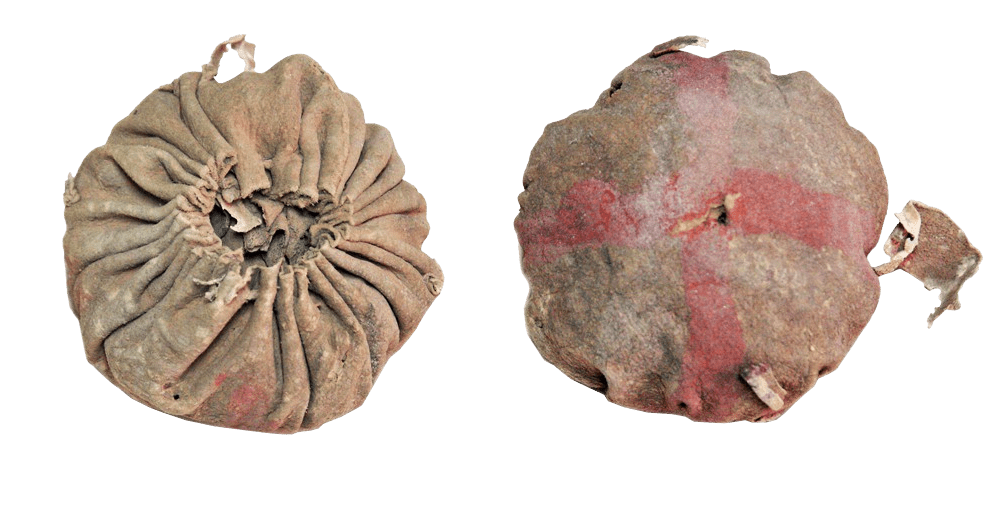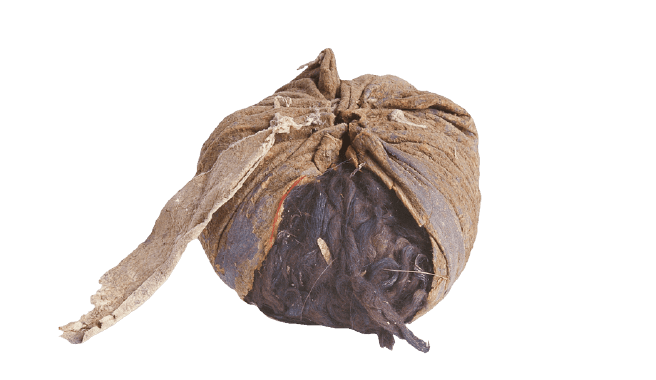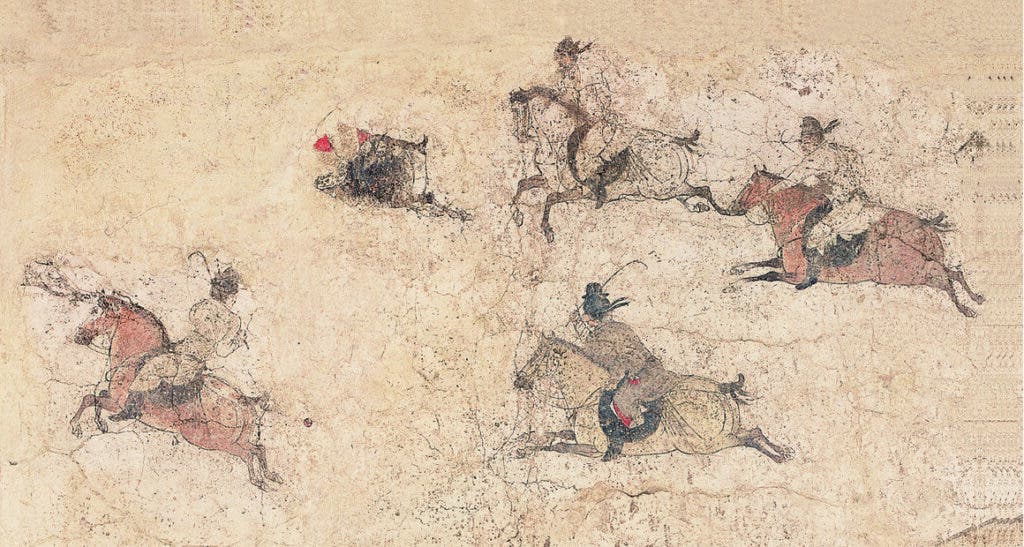
More than 3,000 years ago, horsemen roaming the steppes of northwest China may have engaged in a familiar pastime: a polo-like game in which leather balls are thrown about the field. That’s judging from three such well preserved leather balls excavated from the famous Yanghai tombs, which are thought to be the oldest leather balls in Eurasia.
One of the tombs found in the ancient cemetery, now located in the Xinjiang Uighur Autonomous Region in northwest China, was first excavated in the 1970s. There, local archaeologists found the remains of a man, along with a pair of leather pants with an enlarged crotch, suggesting they were specially made for horseback riding, a pair of red leather boots, and a fist-sized leather ball.
Since then, over 500 graves have been excavated at Yanghai, three of which included leather balls. Two of these balls were curiously marked with red crosses.

Each dumpling-like ball is stuffed with wool and hair, and looks mighty punchable. According to a recent study published in the Journal of Archaeological Science: Reports, the leather balls are at least half a millennium older than other balls found in Eurasia. This begs the question: what were they used for?
According to the authors of the study, “their use in team and goal sport is likely,” however “a suggested game similar to hockey, golf or polo cannot be confirmed, because no appropriate sticks were found in direct association with the balls. “
“This makes these balls about five centuries older than the previously known ancient balls and depictions of ball games in Eurasia,” says first author Patrick Wertmann of the Institute of Asian and Oriental Studies of the University of Zurich. “Unfortunately, however, the associated archaeological information is not sufficient to answer the question of exactly how these balls were played.”
But although the researchers didn’t want to speculate more than the evidence they had at hand, Chinese artwork showing horsemen playing polo-like games look like too much of a coincidence. Curved wooden sticks were in fact found at Yanghai, however, the researchers disregarded them because the “sticks are noticeably younger in age, and other forms of use should be verified by future studies.

One of the riders’ graves also contained composite bow and a pair of pants. These artifacts point toward a new era of horse riding, in which equestrial warfare began to play an increasingly dominant role in eastern Central Asia. Perhaps these were the stepping stones onto which the great Mongol Empire would rise to power in the Middle Ages.
A polo-like game seems very plausible at this point. Polo may very well be the oldest team sport, although its origins are unknown. The first recorded polo tournament dates from 600 B.C. between the Turkomans and the Persians (the Turkomans were victorious, for your information). The name is thought to have originated from the Tibetan “pholo”, which means “ball” or “ballgame”, which is yet another clue that supports Yanghai connections to polo.
Yanghai people once lived in a relatively humid area like an oasis with local water resources. They lived mainly pastorally and cultivated common millet, naked barley, and wheat as a supplement. Evidence of viticulture in the area suggests that they may have led sedentary lives. But regardless of whether they stayed put or were mobile pastoralists, it seems like they enjoyed playing ball on their horse as much as today’s British aristocrats.
“Given that ball games from ancient times were considered an excellent form of physical exercise and military training, we suggest that balls (and ball games) appeared in the region at the same time as horseback riding and mounted warfare began to spread in the eastern part of Central Asia,” the researchers wrote.
Was this helpful?



